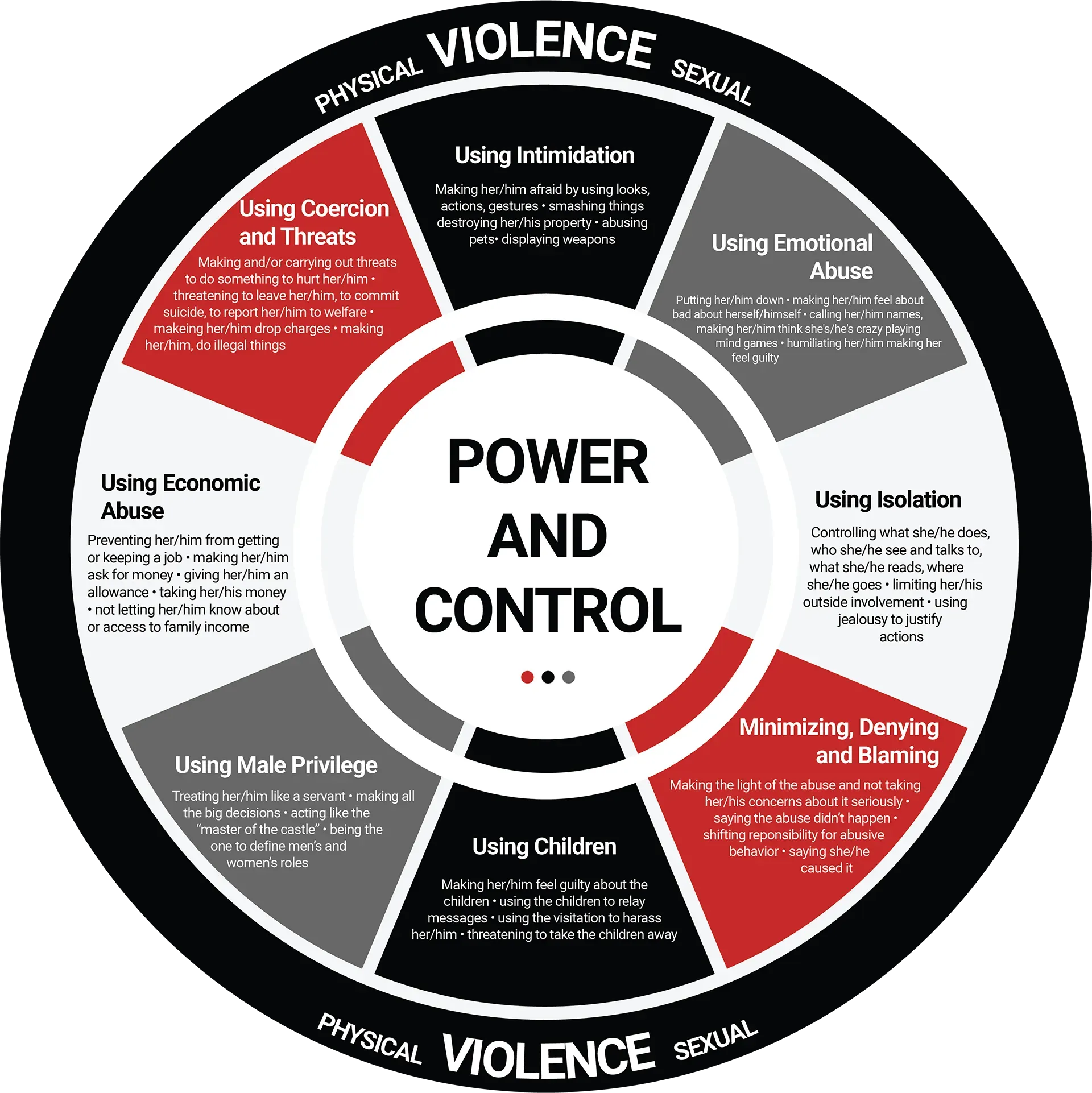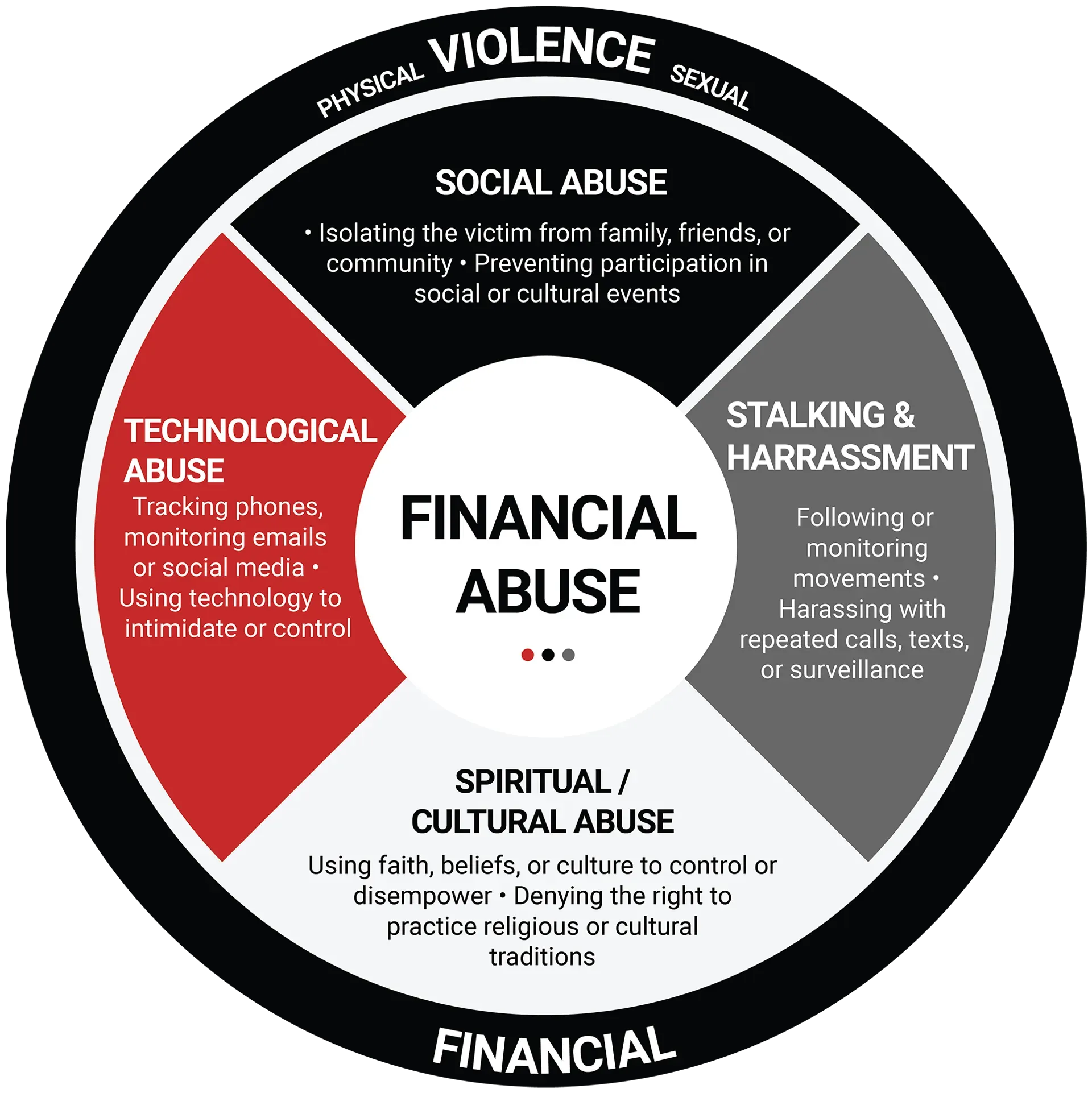Forms of Abuse
Domestic and family violence can take many forms. It is rarely just one behaviour; perpetrators often use multiple tactics at the same time to maintain control.
Understanding these forms helps victims, families, and communities recognise abuse and take steps toward safety.
The Power & Control Wheel
The Power & Control Wheel is a globally recognised tool that illustrates how abuse works in relationships. It highlights the tactics perpetrators use to dominate and control their partners.
Abuse is not only physical; it can include intimidation, emotional manipulation, financial control, isolation, and other behaviours that undermine safety and independence.
Financial Abuse Wheel
Financial abuse is one of the most common and least recognised forms of abuse. It occurs when perpetrators use money to create dependency or limit freedom.
This might include withholding access to income, sabotaging employment, controlling how money is spent, or creating debt in the victim’s name.
Technology-Facilitated Abuse Wheel
Technology can be used as another tool for control. Perpetrators may monitor movements, track communications, spread abuse online, or use digital surveillance to intimidate and isolate victims.
Technology-facilitated abuse can feel inescapable and intrusive, blurring the boundaries between private and public life.
What is Coercive Control?
Coercive control is a pattern of behaviours designed to dominate and isolate. While not always physical, it is now recognised as a serious form of abuse and, in some places, a criminal offence
It can include:
Isolating someone from friends or family
Monitoring movements, phone or online activity
Controlling finances
Threatening harm to pets or children
Using intimidation and manipulation to create fear
Coercive control involves ongoing patterns of behaviour, a calculated attempt to erode autonomy and create dependency.
Why Understanding Forms of Abuse Matters
Recognising that abuse comes in many forms is an essential step in identifying unsafe relationships.
- Victims may minimise abuse if it doesn’t involve visible injuries.
- Non-physical forms of abuse, like financial or technological abuse, can be just as damaging.
- By naming these tactics, communities can better support those affected and challenge the behaviours that enable domestic and family violence.






